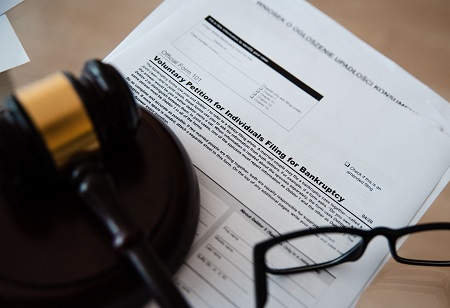When And How To File For Bankruptcy
By Sammy, content writer

The world of business can be unpredictable. Things may go south, and you may end up being financially unstable to the point you consider filing for bankruptcy.
Clearly, this is a difficult decision to make, but it can also be a necessary one to get back on your feet financially. That is if you know what to do.
In the first place, filing for bankruptcy is a legal process that helps you eliminate or repay your debts through a court-approved repayment plan or by having your debts forgiven entirely. Knowing when and how to file for it can make the process easier and less daunting. This involves the options you can take while filing for it, as is the case with Chapter 13 bankruptcy in the US.
Here's a detailed run-through on how Chapter 13 bankruptcy works:
If you are seriously considering it, this article will show you how to file for bankruptcy the right way.
When To File
Filing for bankruptcy is a significant decision that should not be taken lightly. But how can you tell when it is the smart decision to take?
These are the signs you should watch out for:
1.You Are Unable To Make Your Minimum Payments
When you can't make your minimum monthly payments on credit cards, loans, and other debts, your overall debts are going past your ability to manage.
This can be dangerous when left alone. As you try to balance bills and debts, your obligations easily pile up, driving you deeper and deeper into risky situations.
Fortunately, bankruptcy can provide a fresh start if you're facing overwhelming debt. It allows you to eliminate or restructure your debt and make arrangements for repayment that are more sustainable, keeping losses to a minimum.
2.Creditors Have Begun Taking Legal Action
Another sign that it may be time to file for bankruptcy is when creditors take legal action. When you owe money to creditors, they have the right to take legal action to recover what you owe. That could include filing a lawsuit, placing a lien on the debtor's property, or garnishing the debtor's wages. If you're facing legal action from creditors, it may be time to take more decisive courses of action.
3.When You've Started Pawning Items To Get Money
When you decide to pawn items, you take your belongings (jewellery, electronics, collectibles, etc.) to a pawn shop. The pawn shop will assess the item's value and offer you a loan based on your item's worth. It will then keep your item as collateral until you pay the loan back.
Pawning belongings to get cash is a sign that it may be time to file for bankruptcy. This is because it shows you can no longer meet your financial obligations with immediate funds.
Noticing these signs is not the death knell for your business. As explained here, it's possible to avoid a crisis when you can no longer meet obligations by filing for bankruptcy.
How To File
After you confirm it's time to file for bankruptcy, here are the steps to do it properly:
1. Consult A Credit Counsellor
Getting credit counselling before filing for bankruptcy is crucial. This involves meeting with a credit counsellor to discuss your financial situation and develop an action plan to address your debt. From there, they can help you draft a budget, negotiate with creditors, and develop a repayment plan.
Credit counselling can also help you understand the bankruptcy process, identify other potential options, and become more aware of the consequences of filing.
2.Gather Your Documents
Compile key documents, such as bank statements, tax returns, pay stubs, credit card statements, loan documents, and other financial records. These provide the court with a comprehensive picture of your financial situation and are needed to determine your eligibility for bankruptcy.
Additionally, the court may call for other papers, such as a deed of trust or mortgage documents, to determine your eligibility and to ensure that all your assets are accounted for.
Gathering the necessary documents ahead of time can streamline the filing process and keep proceedings convenient for you and the court.
3.File The Petition
This step requires you to submit a formal request to the court for bankruptcy protection.
The petition needs to include detailed information about your finances, including your income and expenses, assets and liabilities, and any other relevant details. Once the petition is filed, the court will issue a notice to all your creditors informing them of the bankruptcy filing.
4.Attend A Meeting Of Creditors
Once your petition is filed, you will need to attend a meeting of creditors. This meeting is known as the ‘341 meeting’ and is conducted by the bankruptcy trustee. You'll be asked to answer questions under oath regarding your assets, liabilities, and financial situation at this meeting. The trustee will also review your documents regarding your financial situation.
Moreover, creditors may attend this meeting to ask questions. They have the right to challenge any information you've provided. After the meeting, the trustee will either approve or deny the bankruptcy filing.
If all goes well, you should be able to pay off your debts while keeping opportunities open for yourself. It truly is a measure to avoid sinking into total ruin.
Not Always A Crisis
Smart business owners know when to cut back and redraw their plans to avoid a crisis. If you have been thinking of declaring bankruptcy, consider the information found here. Talk to experts if you need to learn more.




